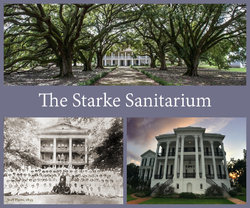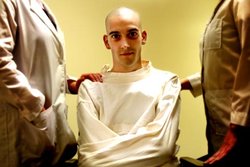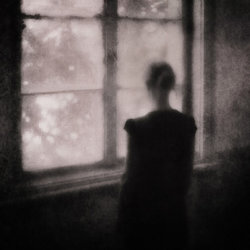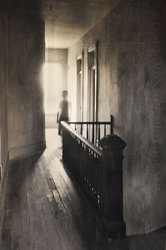Starke Sanitarium loomed at the end of a a double row of tall moss-draped trees. The thick twisted trunks shadowed the long driveway in an obvious, but always disregarded, foreboding of what experiences lay beyond the austere facade of the old plantation house The drive ended in a large cul-de-sac that one could imagine being full of horsedrawn carriages and fine ladies in hoop skirts being helped out by white-suited slaves. These days, the sanitarium was no less supported by the suffering of others as it was hundreds of years ago. The mechanisms were just different and the illusions of its respectability had been changed. The original structure suffered a fire, but it was rebuilt in the early 1920s and expanded while keeping the original foundation.
Behind the plantation house, Stark Sanitarium sprawled out with more modern buildings. At least modern as per the 1950's. Paved walkways connected the former house to a patient wing and a prison wing with a recreational area in between. They were originally used to house the sexes separately, but lucrative contracts from the state for housing the criminally insane prompted the reorganization.
Residential patients typically had more freedom of mobility on the grounds and went to therapy appointments in the main house where most of the staff had their offices. The criminal ward only had access to the rec area for an hour a day, if they had any privileges at all, and doctors went to them for appointments. There was a mix of staff, including administrative, psychiatric, general nursing, medical, and guards as well as prison-trained staff in the criminal ward. Patients were typically brought to the plantation house for meetings with family or outside oversight.
The farmlands of the former plantation have been allowed to be somewhat reclaimed by nature. It provides necessary privacy as well as tax breaks for being a bird sanctuary. The night casts an entirely different mood on the grounds. The moss-covered trees seem to turn into dark bodies twisted in pain, reaching up to the heavens for mercy. The growing forest is full of sounds, not all wildlife, and fog rolls in from the swamp that's slowly encroaching. No other buildings or roads can be seen through the dense foliage, and it provokes a sense of intense isolation. On some nights, it does look like there are other inhabited buildings nearby. One can sometimes see the glow from homes and fires where the slave quarters once stood. But if one were to venture out, all they'd find is darkness and a few fence posts that haven't yet fallen from weathering.
Last edited by a moderator:

 Your support makes Blue Moon possible (Patreon)
Your support makes Blue Moon possible (Patreon)















